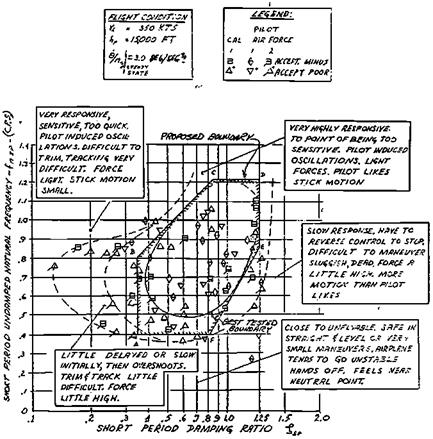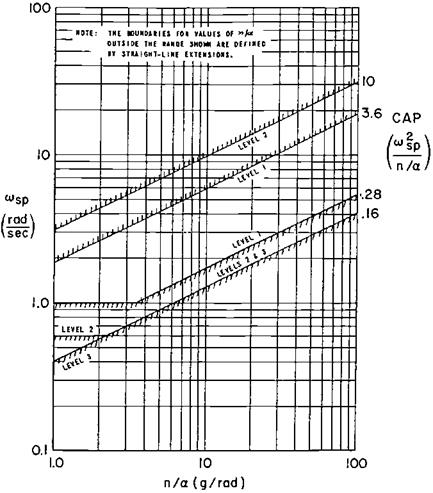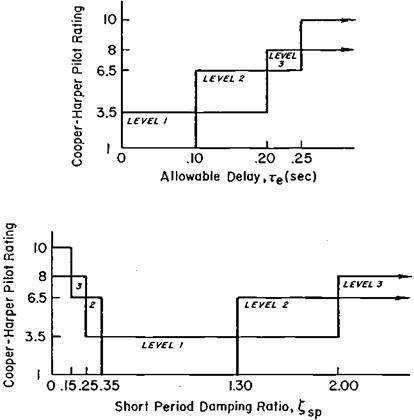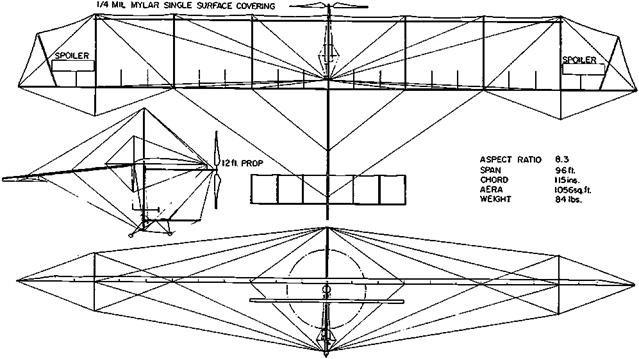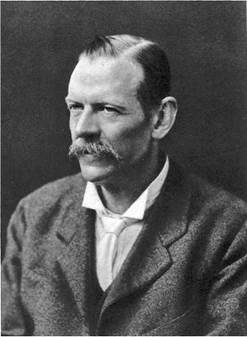Bernard Etkin (1972) gives a succinct description of the way stability and control engineers handle the effects of airframe distortion or elasticity There are two basic categories into which all treatments fall. Etkin calls these categories “The method of quasistatic deflections” and “The method of normal modes.” Here are his words:
Method of Quasistatic Deflections Many of the important effects of distortion can be accounted for by simply altering the aerodynamic derivatives. The assumption is made that changes in aerodynamic loading take place so slowly that the structure is at all times in static equilibrium. (This is equivalent to assuming that the natural frequencies of vibration of the structure are much higher than the frequencies of the rigid-body motions.) Thus a change in load produces a proportional change in the shape of the vehicle, which in turn influences the load.
Method of Normal Modes When the separation in frequency between the elastic degrees of freedom and the rigid-body motions is not large, then significant inertial coupling can occur between the two. In that case, a dynamic analysis is required, which takes account of the time dependence of the elastic motions.
In the latter case Etkin goes on to describe the application of normal mode analysis to the stability and control problem. The important distinction between the quasistatic and normal mode treatments holds as well for the approximate normal modes generated by quasi-rigid models.
19.1 Wing Torsional Divergence
Wing torsional divergence, in which the wing structure itself becomes unstable, tip incidence increasing without limit, is a structural rather than stability and control problem. Torsional divergence occurs with increasing airspeed if the wing’s aerodynamic center is ahead of its shear center, or elastic axis. Although wing torsional divergence is not strictly a stability and control problem, it is the first known phenomenon that can be analyzed with methods used in aeroelastic stability and control.
According to Bisplinghoff, Ashley, and Halfman (1955), the wing failure that wrecked Samuel P. Langley’s Aerodrome on the Potomac River in 1903 was a wing torsional divergence. While there has been some controversy on this point, a torsional divergence occurrence that appears quite certain was on the Fokker D-8 monoplane in 1917. When the first D-8 was sandbag-loaded the wing was proved to be sufficiently strong, but the German government’s engineering division called for rear spar strength equal to that of the front spar. The change was made and three D-8 airplanes, one after the other, were lost when their wings failed in flight. The story is picked up in Anthony H. G. Fokker’s book Flying Dutchman:
I took a new wing out of production and treated it to a sandload test in our own factory. As it was progressively loaded, the deflections of the wing were carefully measured from tip to tip. I discovered that with the increasing load, the angle of incidence at the wing tips increased perceptibly. I did not remember having observed this action in the case of the original wings, as first designed by me. It suddenly dawned on me that this increasing angle of incidence was the cause of the wing’s collapse, as logically the load resulting from pressure in a steep dive would increase faster at the wing tips than in the middle, owing to the increased angle of incidence.
This is a classic wing torsional divergence, since the increasing wing tip incidence increased tip aerodynamic load, which further increased the incidence, and so on. The problem was solved when the government permitted the front spar to be reinforced to bring back the original ratio of stiffness between the front and rear spars. This moved the shear center forward.
The Wright brothers and a few other aviation pioneers used the wing’s elastic properties in a positive sense, warping them for lateral control. The Wrights had no problems with aeroelasticity, aside from an unimportant loss in propeller thrust due to blade twisting.













